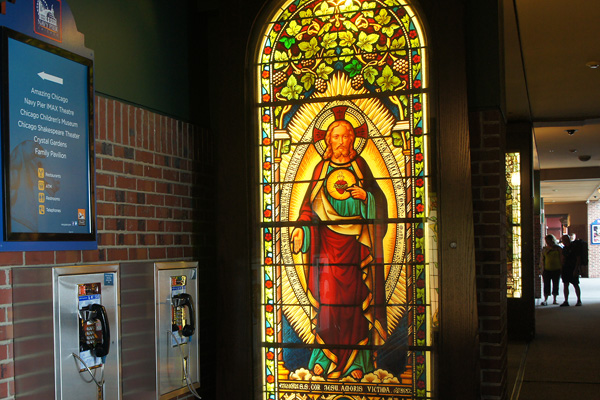
"Modern architecture has not so much excluded the commercial vernacular as it has tried to take it over by inventing and enforcing a vernacular of its own, improved and universal. It has rejected the combination of fine art and crude art. The Italian landscape has always harmonized the vulgar and the Vitruvian: the contorni around the duomo, the portiere's laundry across the padrone's portone, Supercortemaggiore against the Romanesque apse. Naked children have never played in our fountains, and I.M. Pei will never be happy on Route 66." —Robert Venturi and Denise Scott Brown, Learning From Las Vegas
The state just announced that it set a record for the number of domestic tourists visiting the state in a year, more than 99 million people. Chicago set a near record of 46.2 million people. Where they went is hard to say, but the state's most popular tourist attraction, Navy Pier, reported 9.2 million visitors.
It's reviled as a tourist sinkhole ("thank you for siphoning tourists and provincials away from other parts of the city"; "tacky, low class tourist trap"; "cesspool of urban capitalism"; "revel in its chaotic spin cycle of crap"). In over a decade in the city, no one has ever taken me there, or even recommended that I go; I've only been twice, once to cover a story and once to drop something off at WBEZ. Yet it draws a staggering number of visitors: twice as many as Millennium Park, one of the world's great urban spaces, and six times as many as the Art Institute, the city's richest cultural asset. For all it's doing wrong, it must be doing something right. But what is it?
The anectodal consensus is that Navy Pier is a mess that isn't sure what it is, either. And there's a very good reason for that. The Pier has long tracked the fortunes of the city, predicting what the city wants to be but never quite figuring out what it is.
Navy Pier dates back to the early 1900s, the result of competing plans pushed by Daniel Burnham and real estate and shipping magnate James A. Pugh, a battle between design and commerce from the very beginning. Burnham proposed a massive, symmetrical network of piers bookended by long piers at Chicago Avenue and 22nd Street. Pugh began with shipping and warehouse operations—his business—and expanded his idea into three parallel piers that included space for recreation and conventions: "with this great auditorium, half a mile out into the lake and reached by a transportation system handling 100,000 people an hour, how badly can former convention records may be smashed can only be conjectured," the Tribune wrote.
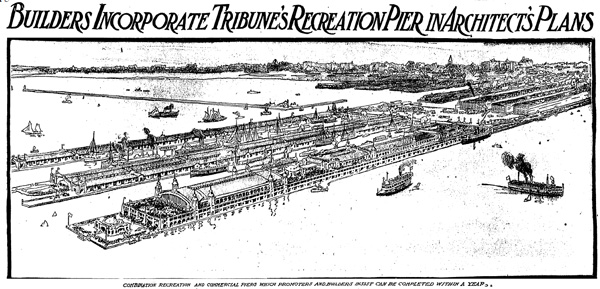
"In a general way I want to say that nothing of the Coney Island hurdy gurdy atmosphere is to be tolerated," Pugh told the Tribune. "Whatever the pay amusements that may be introduced, they will be of a character to attract the best citizens of the town. No decent man will fear to come there, bringing his whole family with him. Chicago has quite enough of the cheaper forms of amusements."
Pugh's pier plan was meant to be private; his company, represented by Abraham Lincoln, had acquired the waterfront property in 1858 with a 99-year lease. But despite the lease's august origins, the city managed to kill it: "although the Trust had been given permission by an act of the legislature to own any landfill created by a breakwater the Canal trust had erected along the lake front north of the river in 1858, the state still owned the land under the water beyond the land created by the legislative mandate." Pugh dropped out and the city constructed Municipal Pier.
Absent Pugh and his commercial piers, the remaining pier nonetheless tolerated no hurdy-gurdy nonsense. the Children's Civic Theater demostrated that "mothers can control their boys and girls effectively by taking interest in their activities"; women's history was "told in allegory" at the "pageant of progress"; the Chicago Playground Olympic Games hosted its aquatic championships in the lake off the pier; the city cracked down on the roof garden for serving "soft" drinks of 7.3 percent alcohol. It was a Progressive-era playground for the benefit of the city, but a Chicago one:
An investigation into complaints to the Tribune that the public cafetria on the city owned Municipal Pier is charging exorbitant prices for the food it serves, prices not in keeping with the pocketbooks of those who visit the pier, yesterday revealed interesting results, particularly in the comparison of its prices with the tariff loop cafeterias receive for the same foods, similarly served.
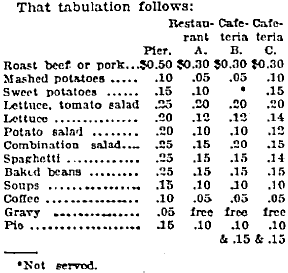
So it's not like the current state of cuisine at Navy Pier is exactly a fall from grace.
What went wrong with Navy Pier was what went wrong with American central cities. Navy Pier was renamed to honor World War I veterans, but during World War II the Navy requisitioned it for actual war use. When those soldiers came home, many went to the Pier's new "Harvard on the Rocks," the University of Illinois's new branch campus, "the narrowest university in the world," located in a "grimy and overcrowded facility." Nonetheless, it remained there for 20 years until UIC finally gave the university a permanent home in the city.
When the university left the pier, it left an indebted, decaying facility with declining port traffic and an exhibition hall hosting a handful of shows a year, extending out into the lake from a fading central city. By 1979, the city's director of special events could tell the Tribune that "you could live here all your life and never even know it existed." The city's attempt to arrest Navy Pier's decline, ChicagoFest, attracted Cheap Trick, Muddy Waters, and some 500,000 people a day; it also attracted $7 million in losses and a decade of lawsuits. Jesse Jackson led a boycott of it; Harold Washington used it to campaign against Byrne. Politics, corruption, and race relations all combined to kill off the city's attempt to remind the city of its once-grand promenade.
A decade later, under Mayor Daley, Chicago tried again to restore the Navy Pier of the past. What it got was a Navy Pier very much of its time. The Navy Pier you see today is a relic of the American city in transition, a subtly fascinating piece of recent history.
When writing about Chicago's plans for a new riverwalk, I talked to Aaron Renn, aka the Urbanophile, about the canal walk in Indianapolis, where Renn used to live. His criticism of it is that it's hamstrung by benighted suburban-style development, but he's also sympathetic to why that happened:
It is a direct result of the type of uses and style of development that were implemented along the Canal, development that was, by design, incapable of producing the types of benefits the city wanted to see. I attribute the decision to default to this style to the maturity curve of downtown. At the time the Canal Walk was developed about 15 years ago, downtown was a very different place. It would not have supported robust urban development. Unfortunately, recent developments have largely continued the template established back then even as downtown and macro trends have changed dramatically.
Around 1990, Chicago looked to be in a death spiral. It lost 10 percent of its population from 1970-1980, and another 7.4 percent from 1980-1990. In 1988, William Bennett called Chicago schools the city's worst; from 1990-1995, homicides stayed above 800 per year. Suburban flight denuded the city in a garden. To get suburbanites back, cities offered them a synthesis of the suburban and the urban: training-wheels urbanism. As UIC's James M. Smith writes in a history of Navy Pier's revelopment:
Referring to cities’ change in strategy, Hall describes a phenomenon he calls the “Rousification of America.” This is a reference to the real estate developer James Rouse, who played a large role in reshaping cities across America with his malls and festival marketplace developments that emphasized retail development and attracting visitors (Frieden & Sagalyn, 1989, p. 259). This was a significant change from the strategies industrial cities had embraced earlier in the century, and was in part due to the massive loss of manufacturing jobs across the nation—and especially in Chicago (Judd & Swanstrom, 2004, p. 349; Abu-Lughod, 1999, p. 324).
The shift in focus toward city policies aimed at attracting visitors resulted in the construction of what Dennis Judd has called “tourist bubbles,” which contain attractions targeted to visitors within an area of the downtown that is very clean and heavily policed (1999, p. 36). The tourist bubble shelters visitors from images of urban decline (Beauregard, 2002) and consists of festival market places, enclosed malls, and sports stadiums, types of developments that have been compared to “theme-park building” (Sorkin, 1992, p. xiv). This development constructs a city very different from its industrial precedent, a city in which trademarks of public development become places to play (Judd, 2003a, p. 3; Spirou & Bennett, 2002, p. 17).
In 1991, the city chose Benjamin Thompson & Associates as the architects for Navy Pier, a firm that had worked with James Rouse, a former shopping-mall developer, on some of the highlights of America's Rousification, like Boston's Faneuil Hall ("his riposte to dying urban downtowns"), New York's South Street Seaport ("held up as one of the things that announced… New York had come back from its 1970s brink of ruin"), and Baltimore's Harborplace ("what was Baltimore's main street got turned into just another mall"). When Thompson died in 2002, New York Times obit writer David W. Dunlap had to remind his audience, now well into America's urban renaissance, of Thompson's place in urban history:
As crowded today as ever, the Faneuil Hall Marketplace offered a formula repeated so many times — even by Mr. Thompson himself at the South Street Seaport in Manhattan, Harborplace in Baltimore and Union Station in Washington — that it is difficult now to recall how radical the notion once was that a dilapidated, moribund inner-city locale could be remade as a vibrant, popular, round-the-clock gathering place.
It was a radical enough concept that, in 1981, Time had to add an exclamation point to it:
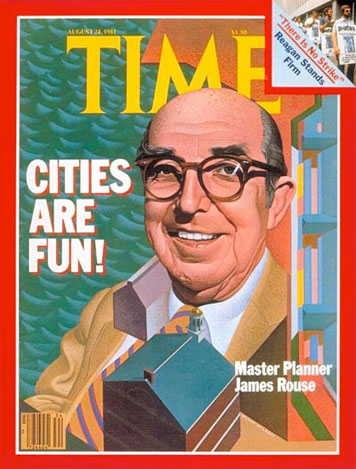
1909: "Make no little plans." 1981: CITIES ARE FUN!
Like Ye Olde Baseball Stadiums that began springing up in 1992 with Baltimore's Camden Yards, Navy Pier is a simulacrum of what Municipal Pier was in 1916. It's dated, back to a very particular time in American urban history. It has all the trappings of a worse time in Chicago, but it works on the same principles as it did when Chicago was a city on the make. Which is why it works, if uneasily.
1. It's an unapologetic mix of high and low culture.
Entering Navy Pier, you're greeted with what every red-blooded American immediately recognizes as a mall, from the wood-paneled info desk to the soporific pseudo-brick tile pattern.
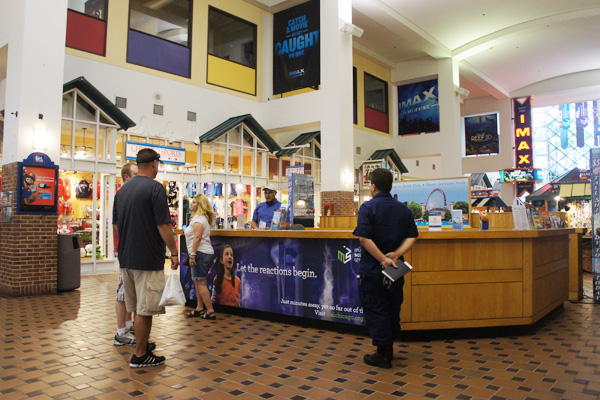
This winds back through the pier; it's assaultive to the senses, but also reassuring, if, say, you grew up vacationing in places like Myrtle Beach (I did) and brought home cheesy vacation trinkets (ditto).
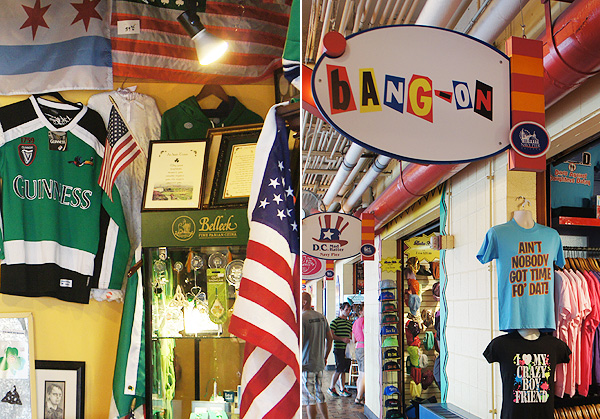
But if you follow it through, perhaps to Chicago Shakespeare Theater or the city's public radio station, it begins to quiet down; eventually you find yourself in one of the city's small gems, the Smith Museum of Stained Glass Windows, which documents the history of the medium from Louis Comfort Tiffany to Ed Paschke.
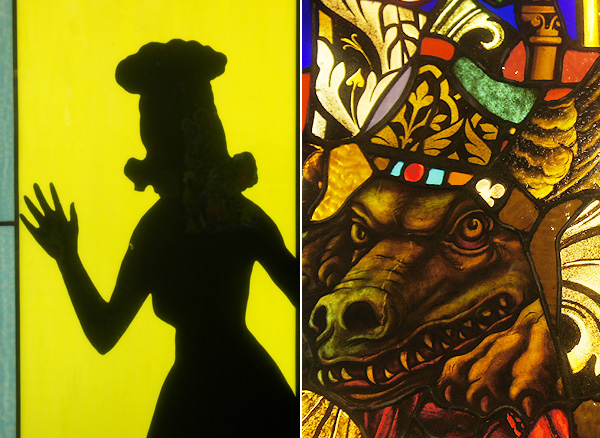
2. There's too little to do, and too much going on
This is the consensus of Navy Pier's critics on Yelp. And they're both correct. After struggling through the top-40 music at the Pier's entrance, you can put yourself into a coma at the Dessert Center at the McDonald's of the Future (circa 1994), or perhaps with a Frozen Concoction at Jimmy Buffett's Margaritaville Bar & Grill.
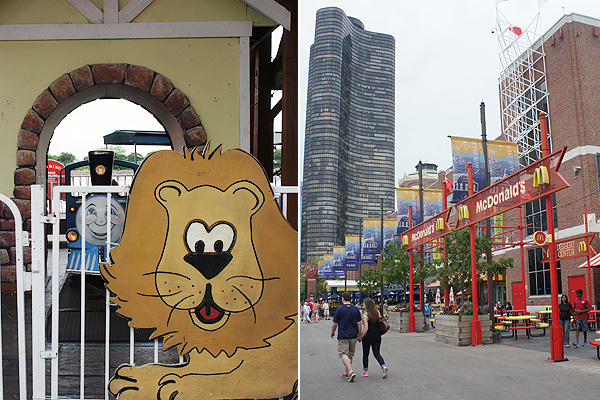
When the noise starts to drill a hole through your skull, it's time to walk down the pier, past the reach of mammon and Justin Bieber to the water's edge to look back at the city.
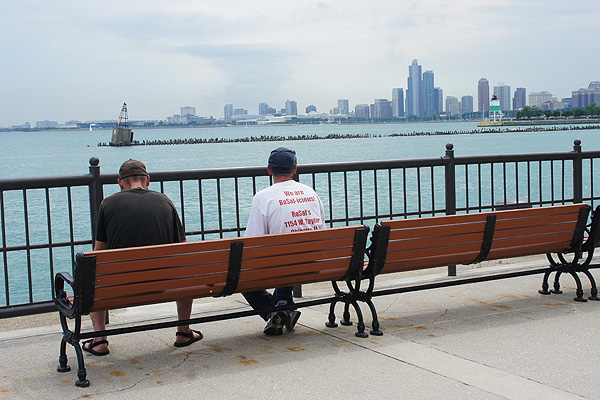
Or out past nothing at all.
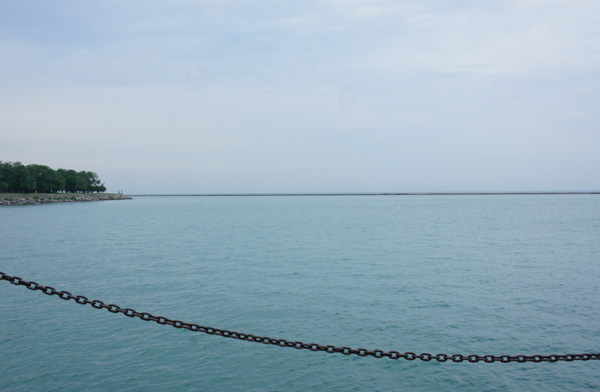
3. It tells a story of Chicago
Reviewing Millennium Park, the High Line in New York (in the game of cultural telephony that creates urbanism, Millenium Park influenced the High Line, which begat the forthcoming 606 Park), and St. Louis's Citygarden, Sarah Williams Goldhagen writes:
[Frederick Law] Olmsted’s second lesson is that the great urban park must include narration. This lesson addresses form, not content—Central Park’s story of restoring equilibrium between city and country is a tale that no contemporary urban park could credibly tell. But formally, designers of today’s urban parks will make distinctive places in the cityscape only by telling its users a story (or stories) of their own about their cities and the place of nature and people within them. And Olmsted’s first two lessons, aesthetic coherence and storytelling, lead to a third: the great urban park must be designed so that it substantively changes its users’ experiences of one another and of the city.
What does Millennium Park do, in Goldhagen's account? Its monuments "wrest parkgoers from the inner narrative of their own subjectivity, confronting them with the spectacle of themselves as objects in the unfolding monument of metropolitan life." The Bean "projects distorted reflections of visitors, their movements and regroupings, in the surrounding cityscape, giving people little choice but to look at themselves in the context of what surrounds them—the city they inhabit but too often fail to see."
Navy Pier performs no such artistic miracle. But it does restore equilibrium between the city and the suburbs, the conquered frontier where people are now to the cities where they're returning. It doesn't do so coherently, but the story of Navy Pier hasn't been coherent—it's been a mess of legal fights, racial tension, debt, and corruption, a city afraid of itself. Millennium Park tells a coherent, triumphal story about the future; Navy Pier tells a chaotic one about the past that's no less interesting if you know where to look.


